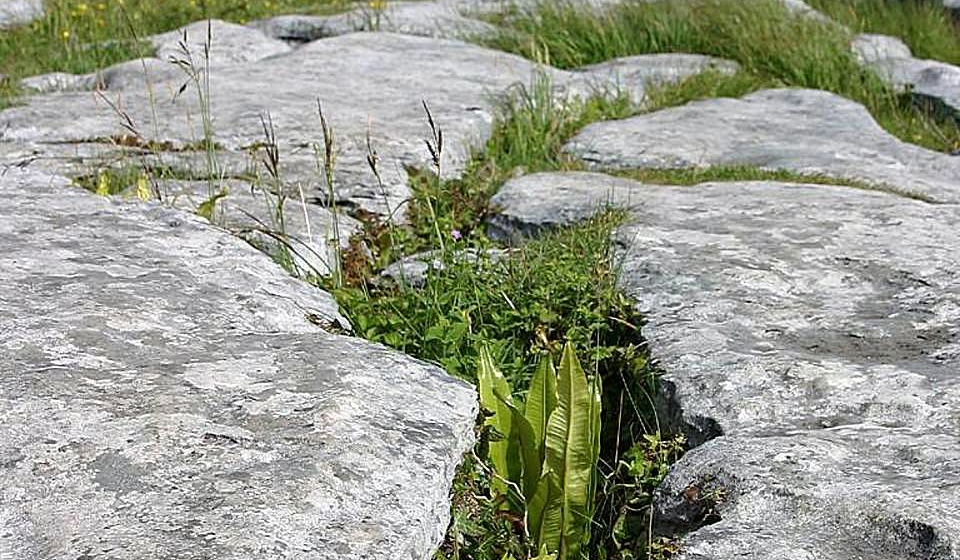Featuring image: Plants slowly eroding limestone. Picture from Jon Sullivan, public domain (C0).
Paper: Composition of continental crust altered by the emergence of land plants
Authors: C. J. Spencer, N. S. Davies, T. M. Gernon, X. Wang, W. J. McMahon, T. R. I. Morrell, T. Hincks, P. K. Pufahl, A. Brasier, M. Seraine and G.-M. Lu
In the winter of 1990, the first Voyager spacecraft looked over its shoulder and snapped an iconic photo of Earth as a ‘pale blue dot’ in the vast cosmos. But when you look at it from Space, there is another very important colour: green. Plants cover a major portion of the landmasses. Besides bringing their bright chlorophyll colour to the continents, new research by Spencer and co-authors finds that plants have also slowly changed the composition of the Earth’s crust over hundreds of millions of years.
In a recent study, Spencer and co-workers were able to connect the development of land plants to changes in the geochemical composition of crustal rocks through the effects that plants had on landscapes, weathering, and sediments. Land plants arose during the early Ordovician period, about 440 million years ago, and today they cover approximately 84% of Earth’s landmasses. After they spread all over the continents, plants started to heavily influence the sedimentary cycles between continents and oceans.
Continue reading “How plants left a mark on history”

